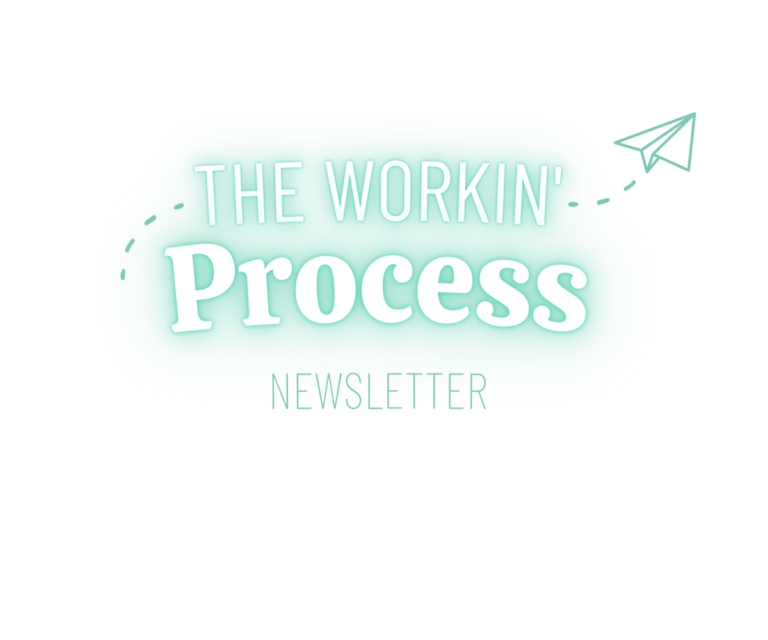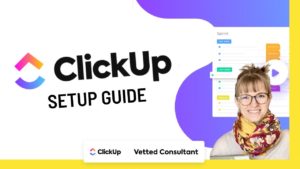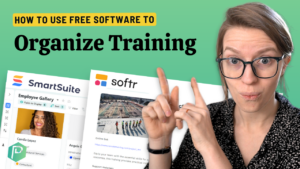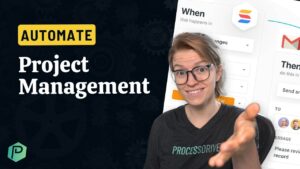Leila Hormozi’s Process for Hiring Employees for Your Small Business
Raise your hand if you’ve accidentally hired the wrong candidate for a job. ✋
Hiring employees for your small business can be challenging and time-consuming. Most people would rather skip a few steps and hire someone who looks great on paper. However, this approach can easily backfire and create additional fires to extinguish. 🧯
That’s why it’s essential to establish a comprehensive hiring process.
To help us with this article, we pulled inspiration from industry pro, Leila Hormozi.
Leila is the CEO of Aquisition.com and specializes in starting and scaling companies. She uses her platform to share insight on effective business practices.
Let’s break down Leila’s step-by-step process for evaluating and hiring new team members.
Watch the video or review the recap below!
Hiring Employees for Your Small Business is an Internal Matter
Nothing is more frustrating than going through the hiring process only for the new person to quit within a week. Not to mention, it’s costly and stressful!
You may have an internal issue if you notice a pattern with new hires. As Leila shares in this video, the revolving door may be due to…
🚶♀️ Confusing onboarding timeline
🚶♀️ Lack of communication with HR manager and team
🚶♀️ Little to no structure with training
🚶♀️ Ambiguous expectations
Communication and transparency is the best rule of thumb as you embark on the hiring journey. Now, let’s move on to Leila’s guide: Hiring employees for your small business (and doing so effectively!). 🤝
Step 1: Clearly Define the Hiring Role
Before publishing your job description for the world to see, start with your pain points. 🎯
Explore Your Pain
Consider why you want to bring a newcomer on board. Is there an issue you need to resolve? For example, you may need help with sales and marketing. Take time to assess areas in your business that require support.
You can use the following metric system to clarify your pain:
🧲 Push metric: What you want a candidate to achieve
🧲 Pull metric: What you want them to avoid
The purpose of push-pull metrics is to balance your incentives and encourage workers to achieve a specific objective.
Highlight Your Benefits
What a candidate brings to the table is important. But it’s also equally vital to create an irresistible spread that will entice the right applicants. Here are four benefits Leila suggests including in your package:
🎁 Compensation: This category covers salary and promotions.
🎁 Benefits: Perks range from health insurance and 401k, to remote options and time off.
🎁 Career growth: Is there room for professional development? If so, what does the career trajectory look like?
🎁 Work environment & culture: Describe your company’s mission and goals. Uniqueness is a refreshing selling point compared to corporation initiatives.
Assess the Level of Expertise
Do you have the time and energy to train a new employee? If the answer is “Yep, I sure do!” feel free to hire someone with junior-level experience. However, if you can’t provide extensive training, opt for a professional with experience.
📝 Quick note: Consider offering an employee training program to teach the ins and outs of your business. We discuss how to create an online course here.
When you hire someone with a specialized background, you can expect them to be on top of their shit and take the initiative in learning your systems. Speaking of processes…
Define Your Process
A process is a series of steps that lead to a desired outcome. Think of it as a Google map that leads from point A to point Z, but for a task or plan. 🗺
Review your business systems and the processes involved with the hiring role. The more clarity you provide upfront, the easier it’ll be for new staff members to integrate into your business.
We realize Step 1: Clearly Define the Hiring Role has quite a few subtasks, so here’s a mini recap:
✅ Explore your pain points
✅ Highlight your benefits
✅ Assess the level of expertise
✅ Define your process
Step 2: Visualize Your Perfect Fit
Like an ideal customer avatar, you want to define the characteristics of a strong contender. Ask yourself the following questions to flesh out your ideal candidate:
- What are your goals for them?
- What expectations should they have for themselves?
- What should they think, do, and focus their efforts on?
- What makes a new team member exceptional vs average?
💡 Pro tip: Need help with your candidate persona? Look no further than your staff. Their contributions will help narrow down your pool of applicants.
In addition, consider positive and negative qualities that will impact your business. For instance, you may want thought leaders who can manage your projects and challenge your current structures.
Step 3: Write a Unique Copy for Your Ideal Match
Rather than creating a generic job description, custom tailor your copy to a specific crowd. Use brand-specific language that will resonate with the right people. 🗣
Avoid cutesy language, like “Rockstar” or “We’re all family here.” While this may seem like a fun way to stand out, many job sites flag vocabulary like this. It may also come across as disingenuous to readers.
You don’t need to use quirky words to inspire people to apply. Instead, lead with transparency and tell it as it is.
Step 4: Revise the Job Description
After writing your copy, review it and see if you checked all the boxes:
✅ Does it highlight your brand’s values?
✅ Does it describe the role and responsibilities, i.e., tasks, required hours, and compensation?
✅ Does it sound like your brand or a generic corporation?
If you need support, reach out to your crew and have them read and revise it accordingly.
Step 5: Post Your Job Description Everywhere
If you want an influx of applications, spread the word using multiple platforms, such as Indeed, LinkedIn, Glassdoor, Monster, and AngelList. You can also utilize social media and create a hiring page on your website.
In addition, Leila recommends simplifying the application process. You don’t need to have people fill out a codeword as if they’re joining a secret club. A simple application with a resume and a cover letter is good enough.
💡 ProcessDriven™ Tip: Consider using a CRM system or sales funnel to collect data before you kick off the next phase of interviews.
Step 6: Offer a Comprehensive Interview Process
Buckle in because Step 6 will take you on a long, thorough journey. The first phase of hiring employees for your small business begins with a screening call.
Initial Phone Call
The first interaction is about gathering information about the applicant and gauging how well they fit with your brand. Are they excited to join your growing business? Why do they want this job? Can they work the designated hours, and does the pay align with their expectations?
Look for any red flags and see if their resume matches their interview answers. One conversation is [hopefully] enough to determine if someone is genuine or feeding you BS. Use your best judgment here. 💭
First Interview With Hiring Manager
After the screening call, you’ll transition to the first interview led by an HR manager. This conversation should focus on the applicant’s history, experience, competence, and values. The manager can also clarify expectations and provide insight into the next 2-3 months.
While the job description may be fresh in the candidate’s mind, discuss the purpose of the role. Review the list of responsibilities so there’s zero room for misinterpretation.
Second Interview to Evaluating Skills
As you dive into interview #2, you’ll want to focus on three categories:
✔ Strength and skills: Do their skills fill a gap in your small business?
✔ Accepted weaknesses: Are their weaknesses a dealbreaker for the role?
✔ Proof of capabilities: Can they prove their skill set? Beyond resumes and interview answers, review their portfolio, or conduct a test assignment. You can also ask situational questions to assess their problem-solving skills.
📝 Note: The hiring manager and key team players may conduct the second interview.
Third Interview for Alignment
It’s time to bring the CEO into the picture. This interview will focus on your work culture, business goals, and values. While you’re together, emphasize the challenges of the role. Keep it real so candidates know what they’re getting themselves into.
If it’s a remote job, be sure to clarify your work requirements. For instance, policies to always turn your camera on during meetings or respond to messages within a specific timeframe. You can also discuss factors that could lead to termination, like consistently showing up late.
Fourth Final Interview With the CEO
Has the CEO been present throughout the previous interviews? If so, this fourth conversation is optional. That is unless you want to be even more thorough, but we’ll leave that decision up to you.
Discuss how the role may develop over time and what a future with your business may look like. You can also use this time to cover benchmark milestones for the next few months.
💡 Special Leila Hormozi tip: Be cautious of likeness bias. It’s easy to hire a new team member because you vibe with them. Being cool ≠ Being qualified for the job
Step 7: Extend a Job Offer and Begin the Onboarding Process
Once you reach a final decision, send a congratulatory email with a job offer package. Be sure to include the following details in your message:
- Outline the onboarding and workday timeline.
- Highlight what tasks will happen and when (Feel free to add specific dates).
- Provide step-by-step instructions on what they need to do before day one.
- Offer a fun swag package. (Optional)
Hiring Employees for Your Small Business, One Step at a Time
The hiring process can be intimidating for many small business owners. Luckily, we have industry pros like Leila to help us ensure we welcome the right people onto our team.
Here’s a summary of the main points:
✅ Consider your top talent must-haves.
✅ Develop a talent attraction strategy outlining your desired skill set, education, and experience.
✅ Establish an employee benefits stack to attract ideal candidates.
✅ Conduct multiple rounds of interviews.
✅ Clarify your expectations for the role.
✅ Be an active participant in the interview and onboarding process.
Feeling inspired to transform your interview system? We have a few words of wisdom of our own to guide your journey: 👇
- Consider creating a hiring funnel to collect and sort applications.
- Subscribe to our YouTube channel (shameless plug) for free content on developing business processes and systems.
- Document your interviewing and onboarding process.
Are you a fan of our step-by-step blog posts? If so, you’ll love ProcessDriven Foundations™. Learn how to organize and implement processes inside your project management software so you and your team can work your magic with no sweat. 💧
Until our next article, enjoy the process!
ProcessDriven helps small teams turn chaos into process. The ProcessDriven Approach™️ combines software expertise with practical process-first strategies that have helped 1,600+ teams build a scalable foundation of business systems.
-
Team ProcessDrivenhttps://processdriven.co/author/lppd-a/March 27, 2020
-
Team ProcessDrivenhttps://processdriven.co/author/lppd-a/
-
Team ProcessDrivenhttps://processdriven.co/author/lppd-a/
-
Team ProcessDrivenhttps://processdriven.co/author/lppd-a/April 13, 2020










